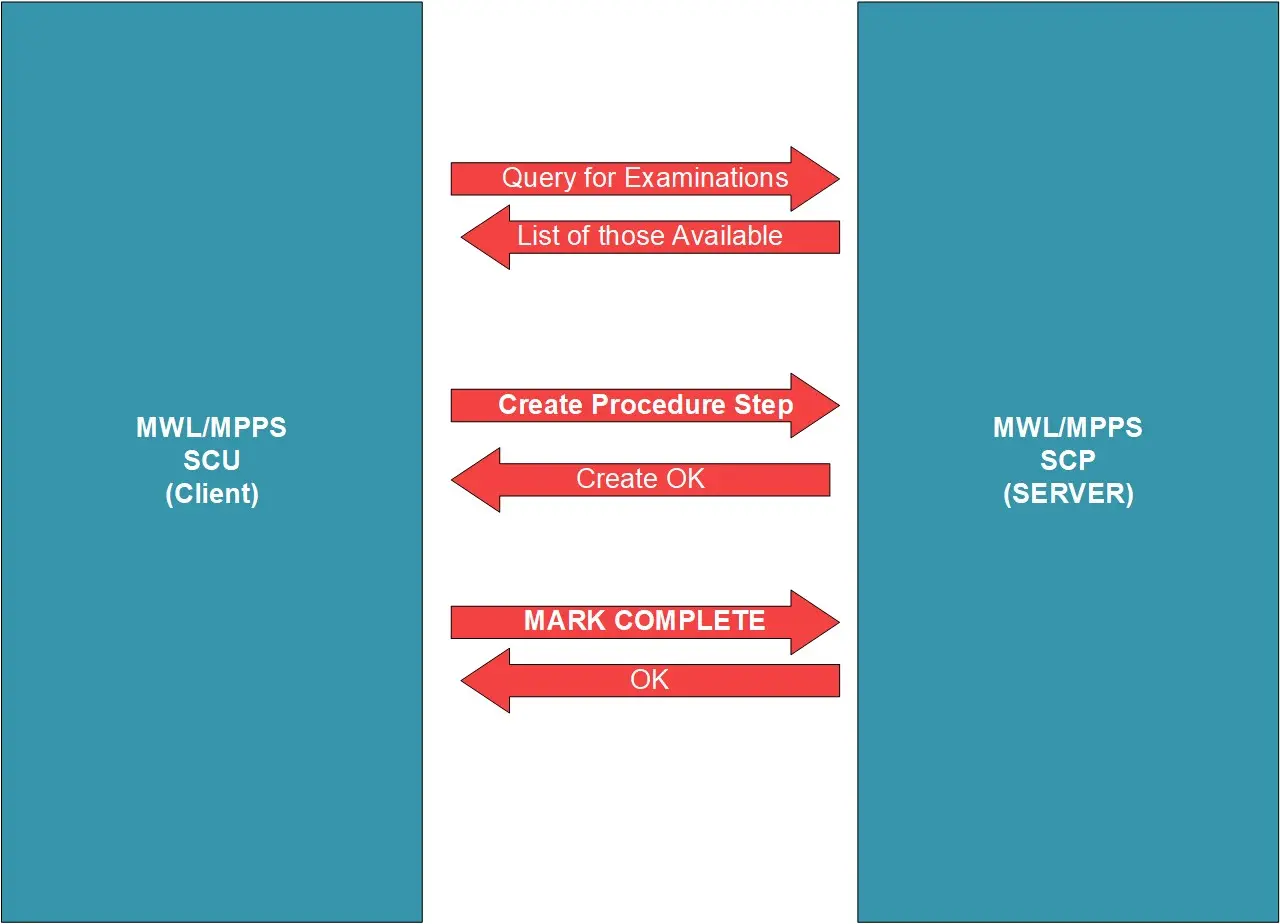Modality Worklist
Overview
Modality Worklist, enables primary imaging equipment (modalities) to query (using C-FIND) for Patient Demographics and Study Details from the MWL SCP, normally part of the RIS,. The modality asks for a list of patients with chosen criteria via Standard C-FIND operation and Modality Worklist responds accordingly. It is important to note that this is the only way that MWL can and does work, namely the modality querying data from the SCP, and there is no means for the SCP to broadcast the data out to modality equipment.
Likewise, the MWL protocol itself provide no means for the modality to inform the RIS of which patient has been chosen from the list of matches returned, though this can be communicated using the Modality Performed Procedure Step (MPPS) service where that is supported by both pieces of equipment.
Advantages of Using MWL
- Reduces operator time
- Reduces data entry errors
- Improves data consistency
Basic Workflow
The Following diagram shows the basic workflow of Modality Worklist

Modality sends images to PACs, which sends messages to RIS indicating a finish. Alternatively Modality sends message to RIS directly and RIS marks the “job done” in the database.
Data Content
The data passed between the applications (both the request and the returned responses) is generally very similar to any other DICOM query, namely a list of attributes which blanks used in the request to indicate fields which must be returned. However, many of the most useful attributes (including modality, date etc.) are actually contained within the “Scheduled Procedure Step Sequence” (0040,0100) which is a sequence containing a single dataset. This causes some confusion to those starting to implement MWL, and it is important to check your implementation against Part 4 of DICOM - in particular Table K.6-1.
And, please do not let end users modify the MWL response data.
MPPS
Modality Performed Procedure Step (MPPS) is the “Converse” of Modality Worklist. It allows a Modality to tell PACs/RIS what it has done. In above diagram, (1) and (2) are MPPS.